Want to make your living room amazing but don’t know where to start? A mood board is your answer!
It’s a visual plan showcasing your room’s appearance before buying anything.
Preview your dream living room with pictures and ideas.
Mood boards show how different pieces work together—from the sofa to wall colors. Either rebuilding or refreshing, a mood board helps avoid clashing purchases.
This guide will show you how to create your own mood board and share style ideas.
Let’s start designing your perfect living room!
Why Create a Mood Board for Your Living Room?
Have you ever bought a beautiful piece of furniture only to find it doesn’t quite work in your space?
Or painted a wall in what you thought was the perfect color, but it somehow feels off with your existing decor?
This is exactly why mood boards are so valuable.
They allow experimentation on paper rather than wasting time and money. It’s like a test drive for your living room design!
Creating a mood board resembles a puzzle; you try different pieces until everything fits.
Using tools like Pinterest and Canva or physical samples helps visualize the big picture. Before buying, you can swap elements, experiment with colors, and visualize your living room.
Key Elements to Include in Your Living Room Mood Board
Let’s break down the essential pieces of a great living room mood board.
1. Colors and Palettes
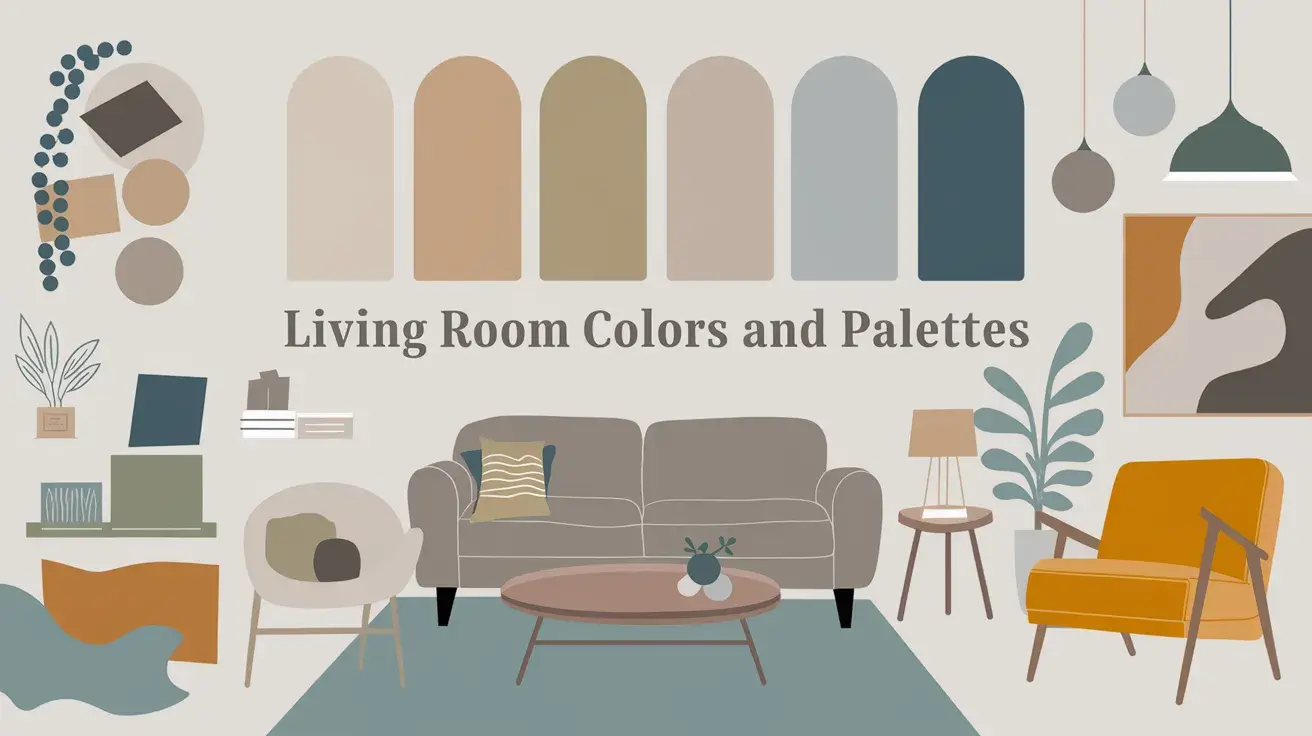
Picking the right colors is like laying the foundation of your living room design. Let’s make it simple!
Primary Color Scheme
Start with 2-3 main colors covering most of your room.
These colors should be the ones you love to look at every day.
Think about your walls, large furniture, and flooring. Pick colors that make you feel comfortable and match your style.
Accent Colors
Add 1-2 bright or contrasting colors to make your room more interesting.
These colors come through small items like pillows, art, or vases. Don’t overdo it – a little pop of color goes a long way!
For example, The Main colors are warm gray (walls) and cream (sofa), with navy blue (armchairs) as a secondary color. Add gold picture frames and emerald green pillows as accent colors.
2. Textures and Materials
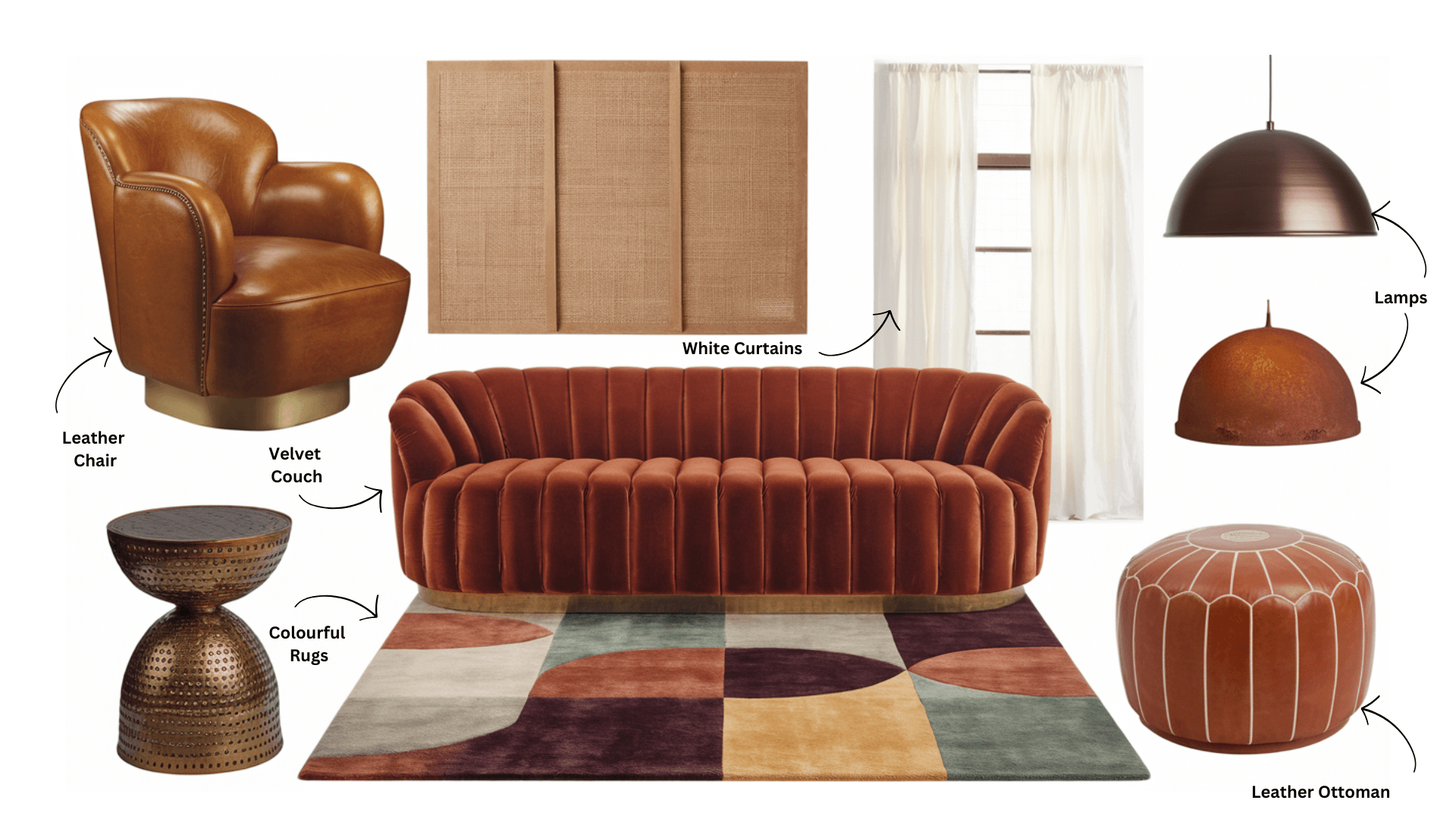
Different textures make your room feel cozy and interesting to look at.
Fabrics
Mix up your fabrics to create interest.
Velvet feels luxurious and looks great on chairs or pillows. Linen is casual and perfect for curtains or light upholstery, whether leather is classic and durable or great for sofas or ottomans.
Flooring
Your floor is a big part of the room! Rugs add warmth and color. Hardwood floors are classic and easy to maintain.
Tiles work great in warm climates and are super durable.
Accent Materials
Mix materials to add depth to your room. Metal (like gold or silver) adds shine, wood brings warmth, and glass keeps things light and airy.
For example, A gray velvet sofa, natural linen curtains, and a leather ottoman. Dark hardwood floors with a soft wool rug. Mix in brass lamp fixtures and a wooden coffee table with a glass top.
3. Furniture and Layout
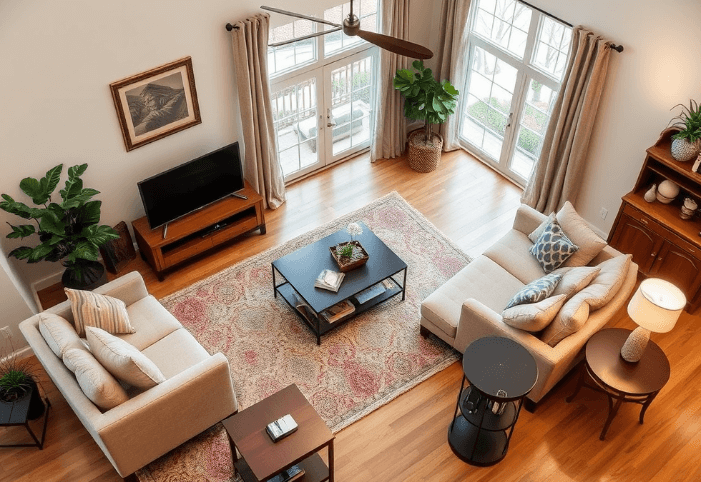
Your furniture needs to look good and work well in your space.
Selecting Furniture
Pick your big pieces first – sofa, chairs, and tables.
Make sure they match in style but don’t look too identical. Think about size and comfort too!
Planning the Layout
Map out where everything will go.
Leave enough space to walk around easily. Consider how you’ll use the room: watching TV, reading, or chatting with friends.
For example, A 3-seater beige sofa facing the TV, two blue accent chairs at an angle, and a round coffee table in the middle. Leave a 3-foot walkway between pieces.
4. Decor and Accessories
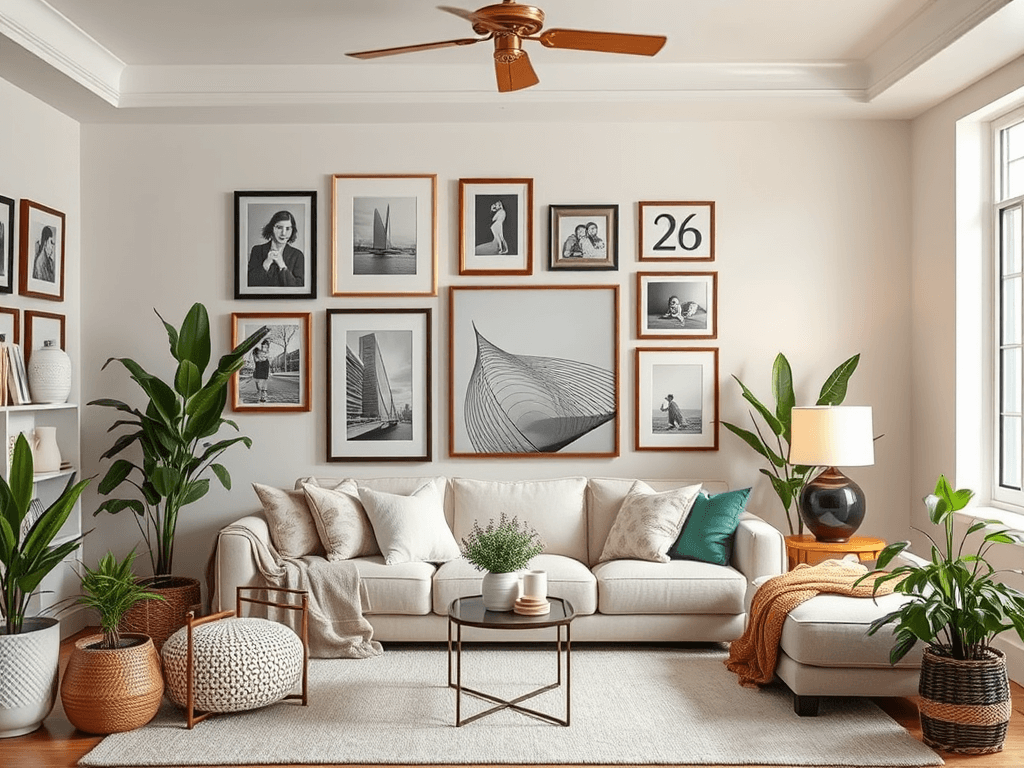
This is where your personality shines!
Artwork and Wall Decor
Choose art you love looking at. Mix up sizes and frames.
Family photos, prints, or paintings all work great.
Cushions, Throws, and Plants
Add soft pillows and blankets for comfort. Plants (real or fake) bring life to any room.
Lighting
Layer your lighting – mix ceiling lights, floor lamps, and table lamps for a cozy feel.
For example, Three framed landscape prints above the sofa, four throw pillows (2 solid, 2 patterned), a cozy blanket basket, two potted plants in corners, a ceiling light with dimmer, and two reading lamps beside chairs.
Remember, you don’t need to include everything at once. Start with the basics and build from there. Your mood board should feel balanced—not too empty or too crowded.
Mood Board Ideas for Different Living Room Styles
Let’s explore some popular living room styles and how to create mood boards for each one.
Think of these as ready-made recipes you can use or mix to match your taste!
Modern Minimalist Mood Board
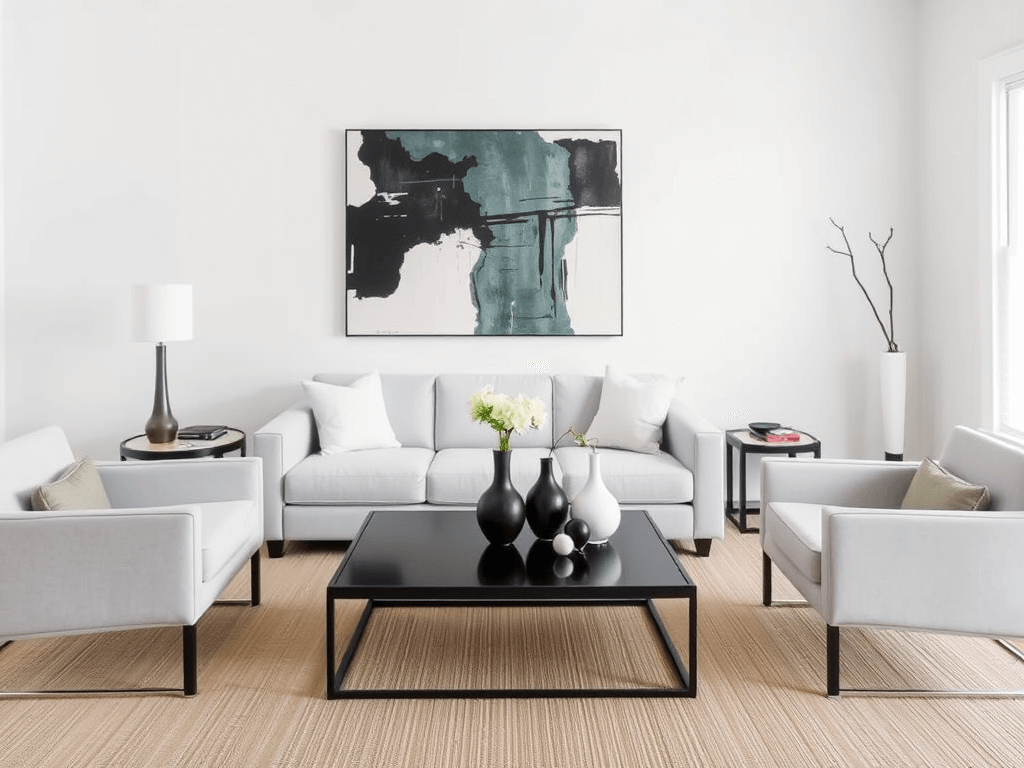
Less is more in a modern minimalist living room. Think clean and simple!
Focus on neutral colors that feel calm and peaceful. Pick furniture with straight, simple lines – nothing too fancy or decorated.
Key Elements:
- Colors: White walls, light gray sofa, beige rug
- Furniture: Simple black coffee table, straight-lined chairs
- Decor: One large piece of abstract art, a few sleek vases
- Tip: Keep surfaces clear and clutter-free
For example, Picture a white room with a light gray sofa, a black metal coffee table, and one striking piece of black and white art. Add just one green plant for a touch of life.
Boho-Chic Mood Board
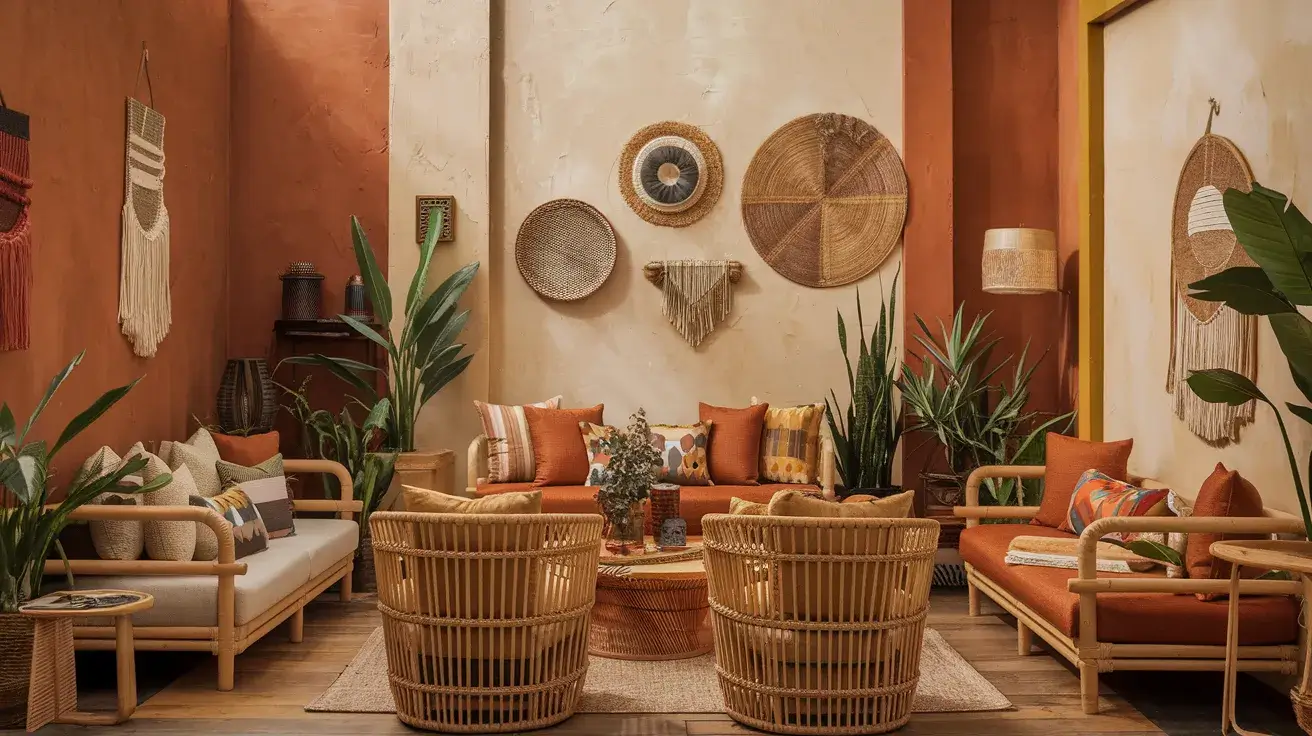
Boho style is relaxed and cozy, like a well-traveled home. Mix patterns and textures freely – this style loves layers!
Key Elements:
- Colors: Warm browns, burnt orange, cream
- Furniture: Rattan chairs, low-sitting sofas
- Decor: Lots of plants, woven wall hangings, colorful pillows
- Tip: Mix old and new pieces for a collected-over-time feel
For example, A cream sofa loaded with colorful pillows, a rattan hanging chair, woven wall baskets, and plenty of green plants in terra cotta pots.
Mid-Century Modern Mood Board
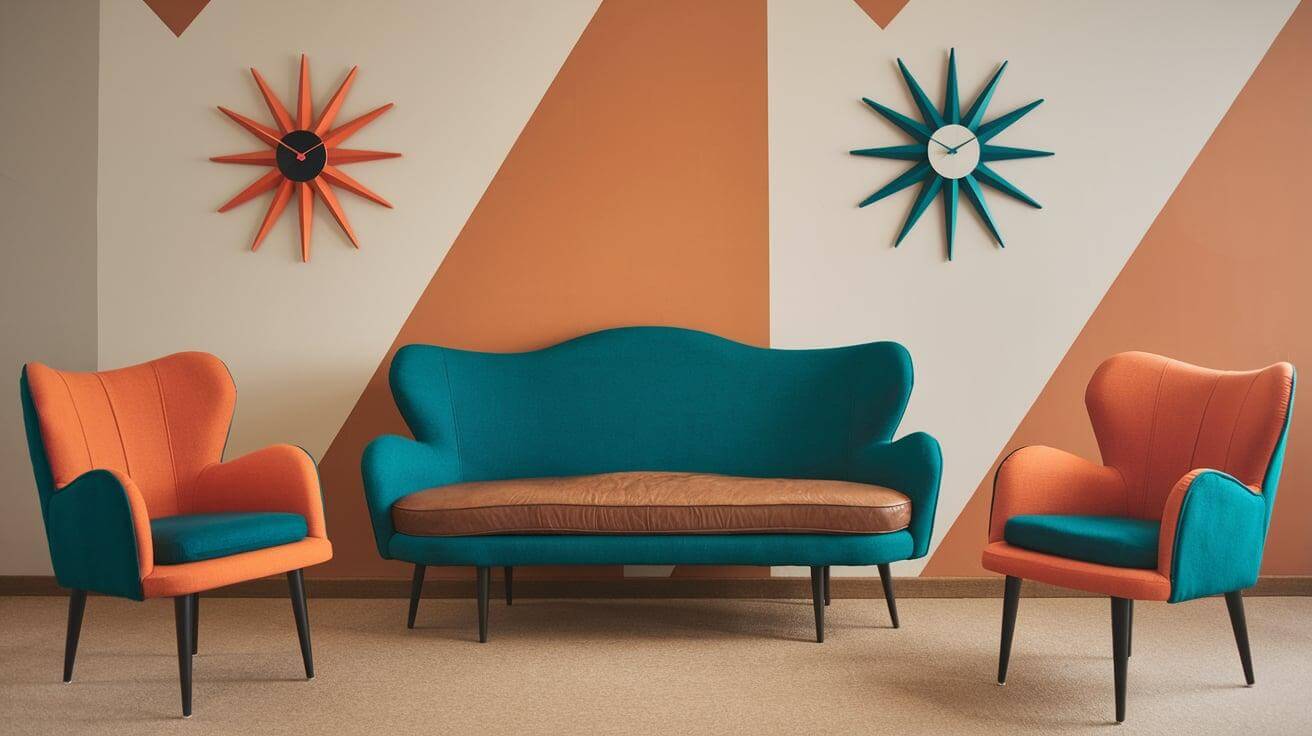
This style mixes old and new in a fun way. Think 1950s-inspired pieces with a modern twist.
Key Elements:
- Colors: Teal, orange, brown
- Furniture: Wooden chairs with thin legs, curved sofas
- Decor: Starburst clocks, geometric patterns
- Tip: Mix warm wood tones with bright colors
For example, A tan leather sofa, a wooden armchair with thin legs, a sunburst mirror, and bright orange pillows.
Industrial Mood Board
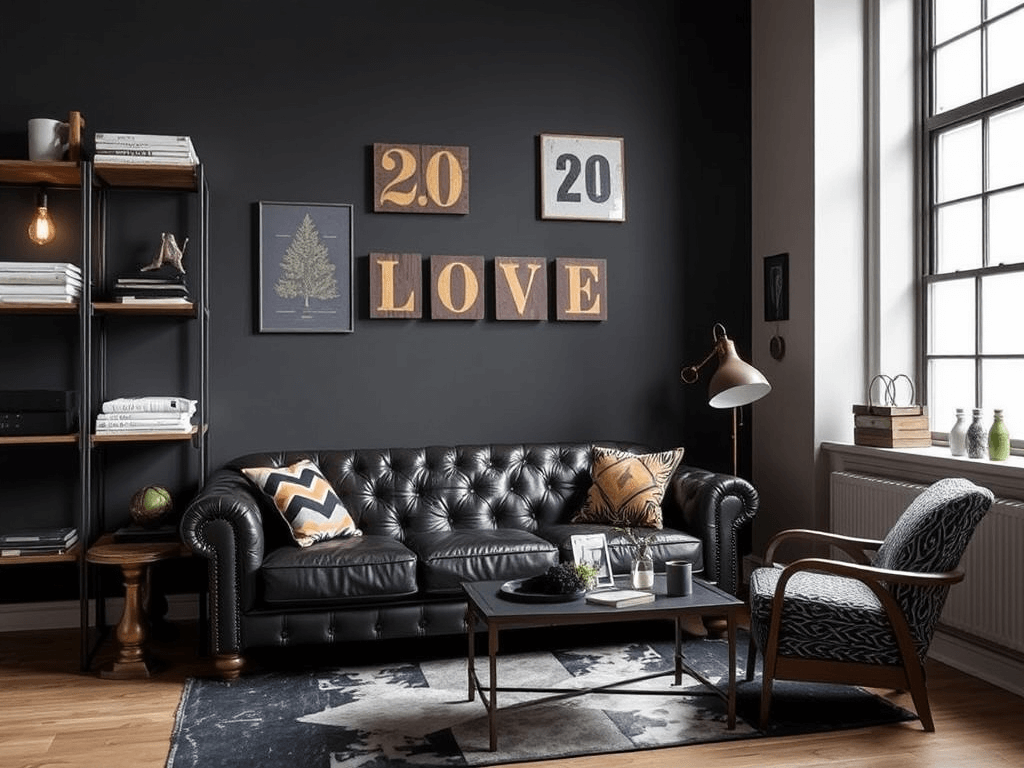
Think converted warehouse with a cozy twist. This style mixes rough and comfortable elements.
Key Elements:
- Colors: Gray, black, brown
- Furniture: Leather sofa, metal shelving
- Decor: Edison bulb lamps, metal signs
- Tip: Balance hard surfaces with soft textures
For example, A brown leather sofa against a brick wall, metal pipe shelving, and warm Edison bulb lighting.
Coastal Mood Board
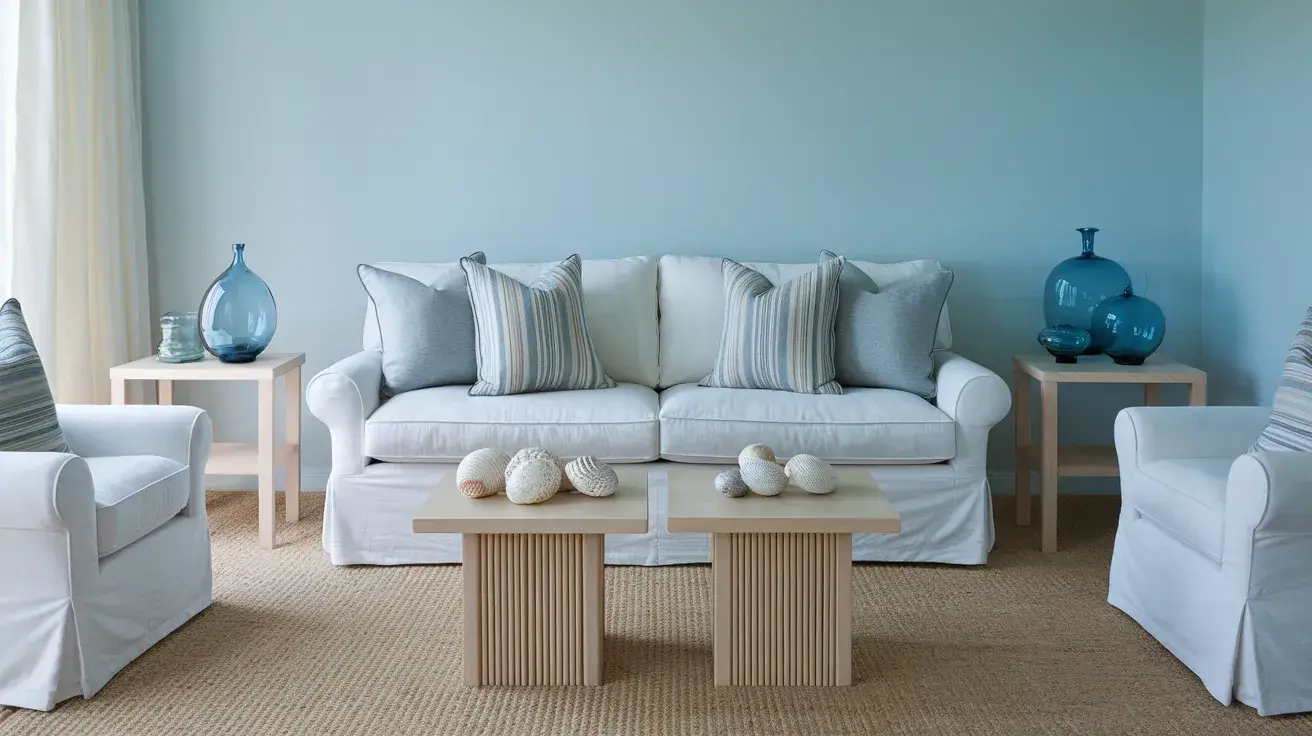
Bring the beach inside! This style should feel light and breezy.
Key Elements:
- Colors: Light blue, white, sand beige
- Furniture: White slipcovered sofa, light wood tables
- Decor: Seashells, blue glass vases, striped pillows
- Tip: Keep everything light and airy
For example, a white sofa with blue-striped pillows, a driftwood coffee table, and art featuring ocean waves.
Farmhouse Mood Board
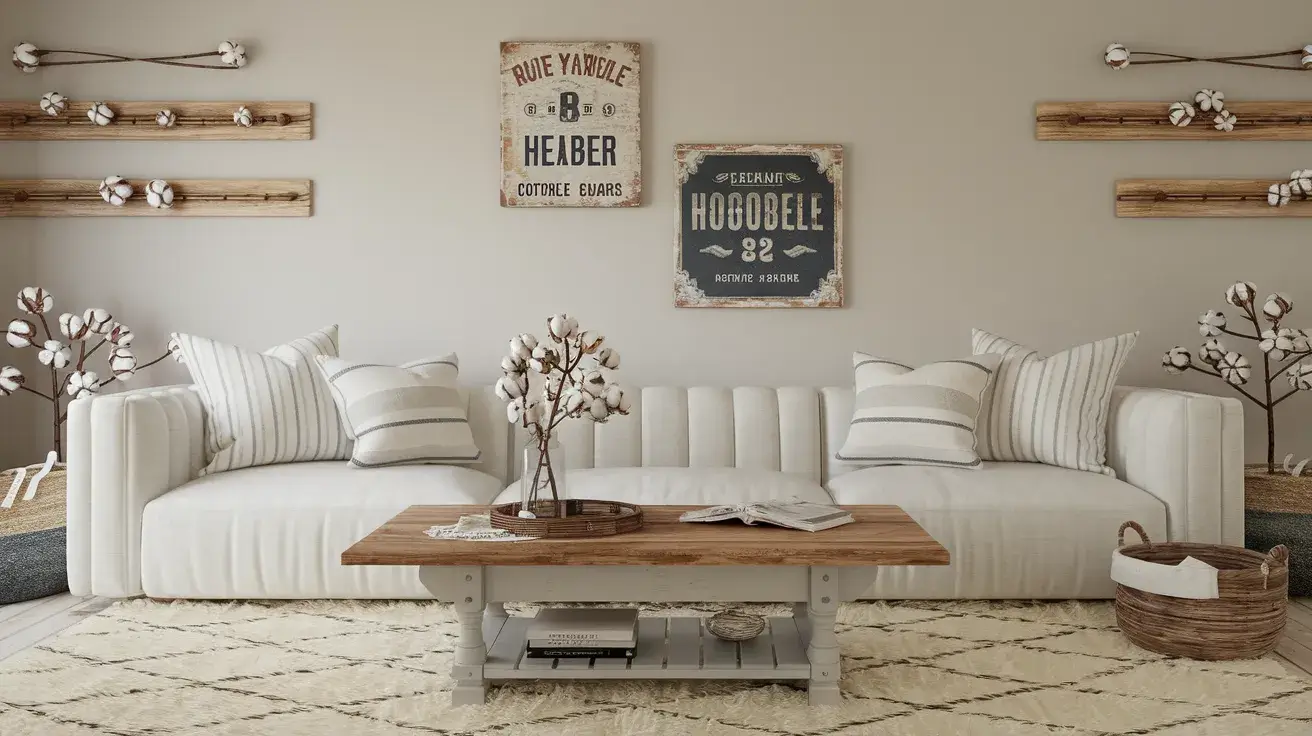
Cozy and welcoming, like a modern country home.
Key Elements:
- Colors: White, cream, light gray
- Furniture: Plush sofa, wooden coffee table
- Decor: Cotton stems, vintage signs, woven baskets
- Tip: Mix new pieces with vintage-looking items
For example, A comfy white slipcovered sofa, a rustic wooden coffee table, and a vintage-style metal sign above a shiplap accent wall.
Remember: You don’t have to stick exactly to one style. Feel free to mix elements you love from different styles to create your perfect space!
Color Palette Ideas for Different Living Room Aesthetics
| Aesthetic Style | Primary Colors | Accent Colors | Neutral Base | Suggested Combinations |
|---|---|---|---|---|
| Modern Minimalist | White, Black, Gray | Gold, Emerald Green | Beige, Light Gray | White walls with gray furniture and gold decor elements. |
| Boho-Chic | Terracotta, Mustard Yellow, Olive | Soft Pink, Teal | Cream, Off-White | Cream base with terracotta cushions and mustard accents. |
| Mid-Century Modern | Burnt Orange, Teal, Mustard | Walnut Brown, Aqua Blue | Light Beige, Warm White | Beige walls with teal sofa and walnut wood furniture. |
| Industrial | Charcoal, Rust Red, Navy | Brass, Dark Green | Concrete Gray | Charcoal walls with brass lighting and rust accents. |
| Coastal | Sky Blue, Seafoam Green, Navy | Sandy Beige, White | Light Cream, Pale Gray | Pale gray base with seafoam textiles and navy accents. |
| Farmhouse | Sage Green, Cream, Soft Yellow | Natural Wood, White | Taupe, Warm Gray | Taupe walls with sage decor and wood furniture. |
Tips for Creating an Effective Living Room Mood Board
- Focus on balance and harmony: Mix big things with small things. If something’s bright, balance it with calm colors. Like arranging furniture in your room, everything needs its own space to look good.
- Don’t overcrowd the board—keep it clean and organized. Keep it simple! Pick your favorite ideas only—group similar things together, like paint colors in one area and fabric pieces in another. A clean board is easier to understand.
- Use swatches and samples for a physical board: Get real samples to touch and see. Paint cards, fabric pieces, and floor samples work better than pictures, as real samples show true colors and textures.
- Adapt your mood board as your ideas evolve: Your ideas will change – that’s normal! Keep what you love; remove what you don’t. Update your board when you find better options. Think of it like updating your playlist with new favorite songs.
Conclusion
Creating a mood board for your living room is more than just collecting pretty pictures – it’s your first step toward making your dream space real.
It helps you stay on track, avoid costly mistakes, and create a room that feels just right for you.
Remember, there’s no “perfect” mood board.
Your board should reflect your style, whether you love modern minimalist designs or cozy farmhouse vibes. Take your time, play with different combinations, and trust your instincts.
The best living rooms make you feel happy when you walk through the door.
Ready to start your mood board? Grab your inspiration.
Frequently Asked Questions
What is the Purpose of Mood Boards?
A mood board helps you visualize how your room will look before you buy anything—it’s like a preview of your future space. It also helps you make better choices, save money by avoiding mistakes, and ensure everything works well together before you start decorating.
What 5 Elements Must You Include on a Mood Board?
Every mood board should include:
(1) a color palette with main and accent colors, (2) key furniture pieces, (3) material textures and patterns, (4) lighting options, and (5) decor accessories. These core elements help visualize how everything will work together in your space.
How to Choose a Mood Board?
Start by picking a style that matches your personality (modern, boho, coastal, etc.) and collect images that make you feel at home. Then, select pieces that fit your budget and lifestyle while sticking to your chosen style’s key elements and color scheme.

